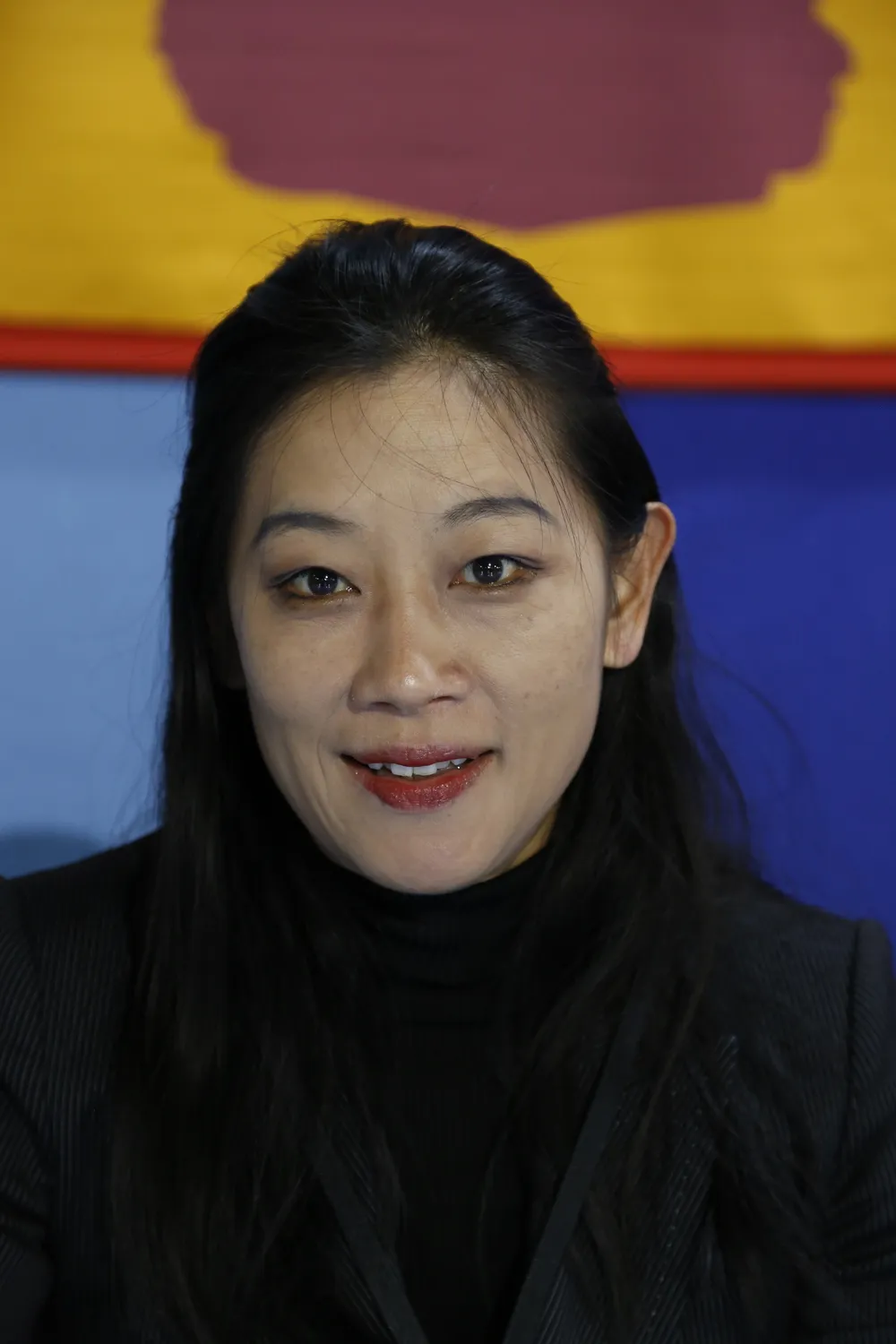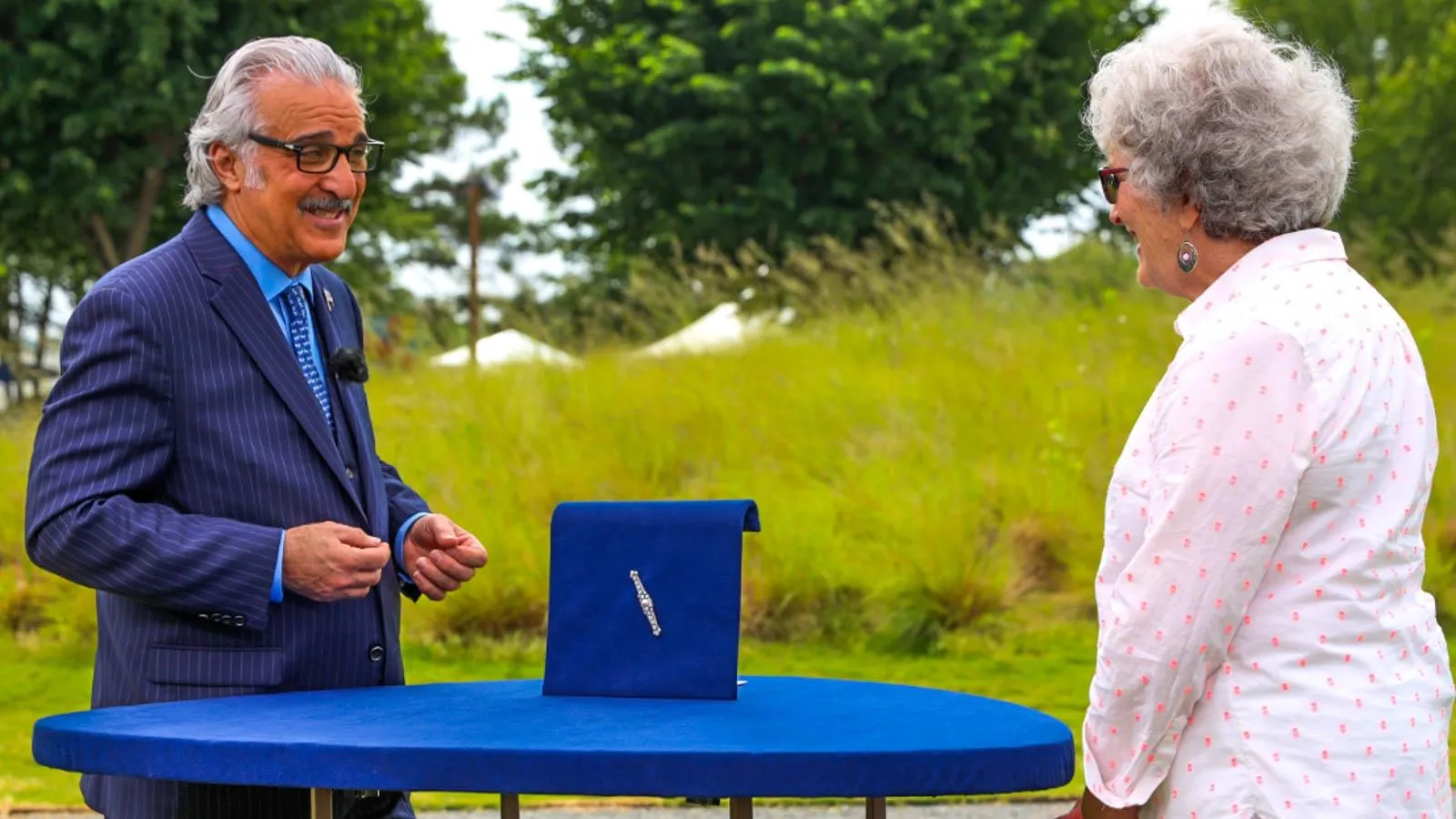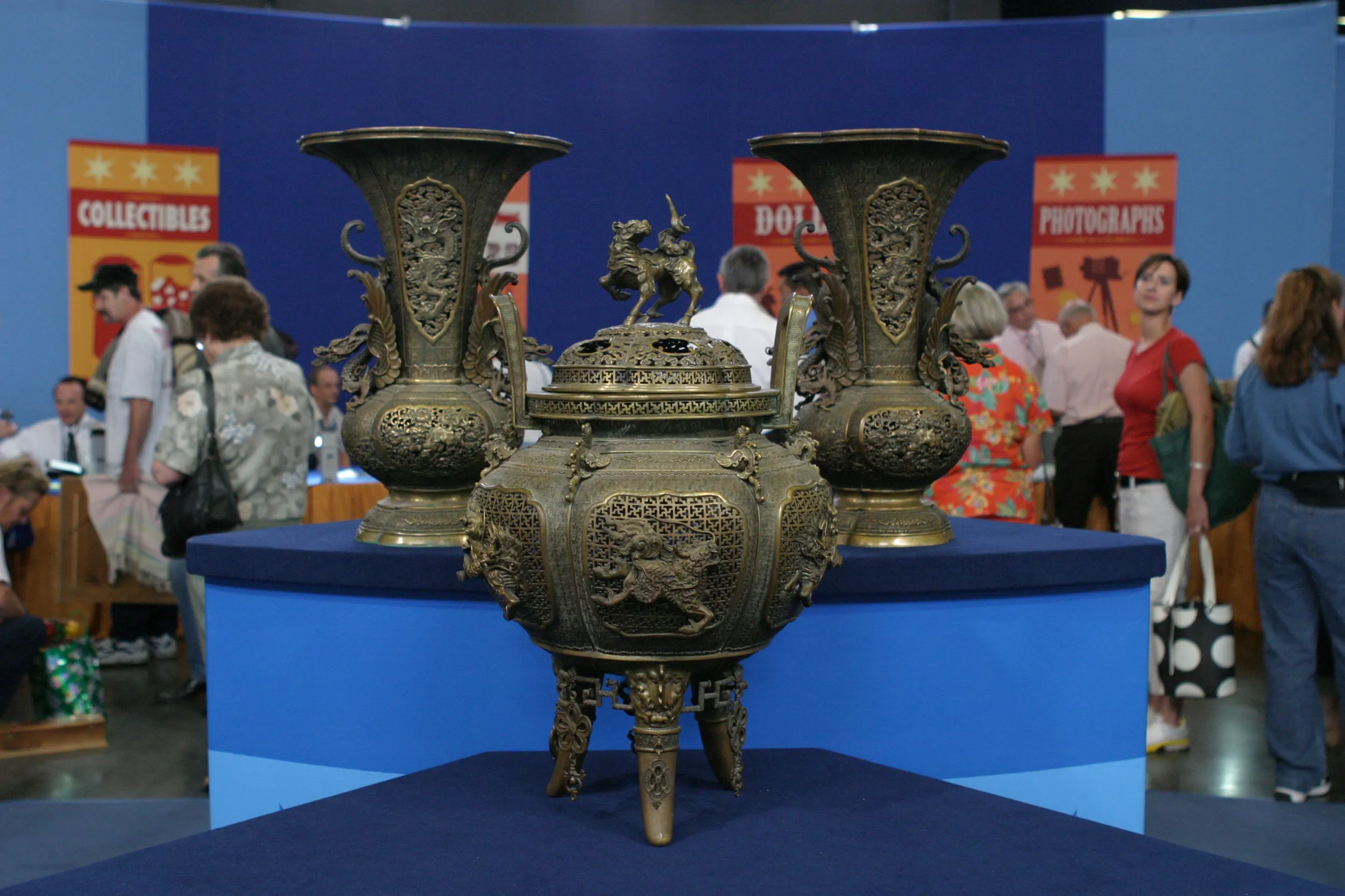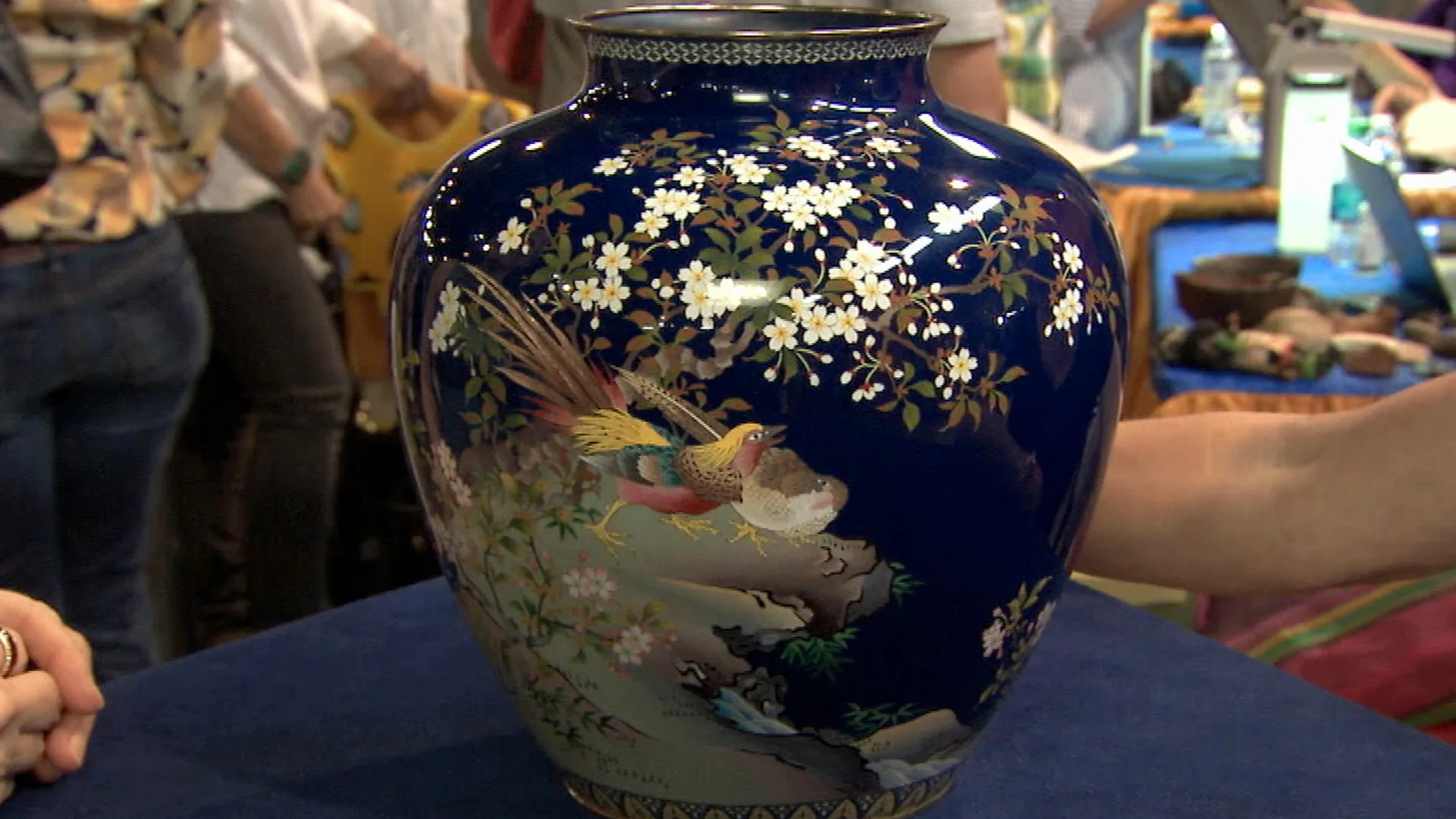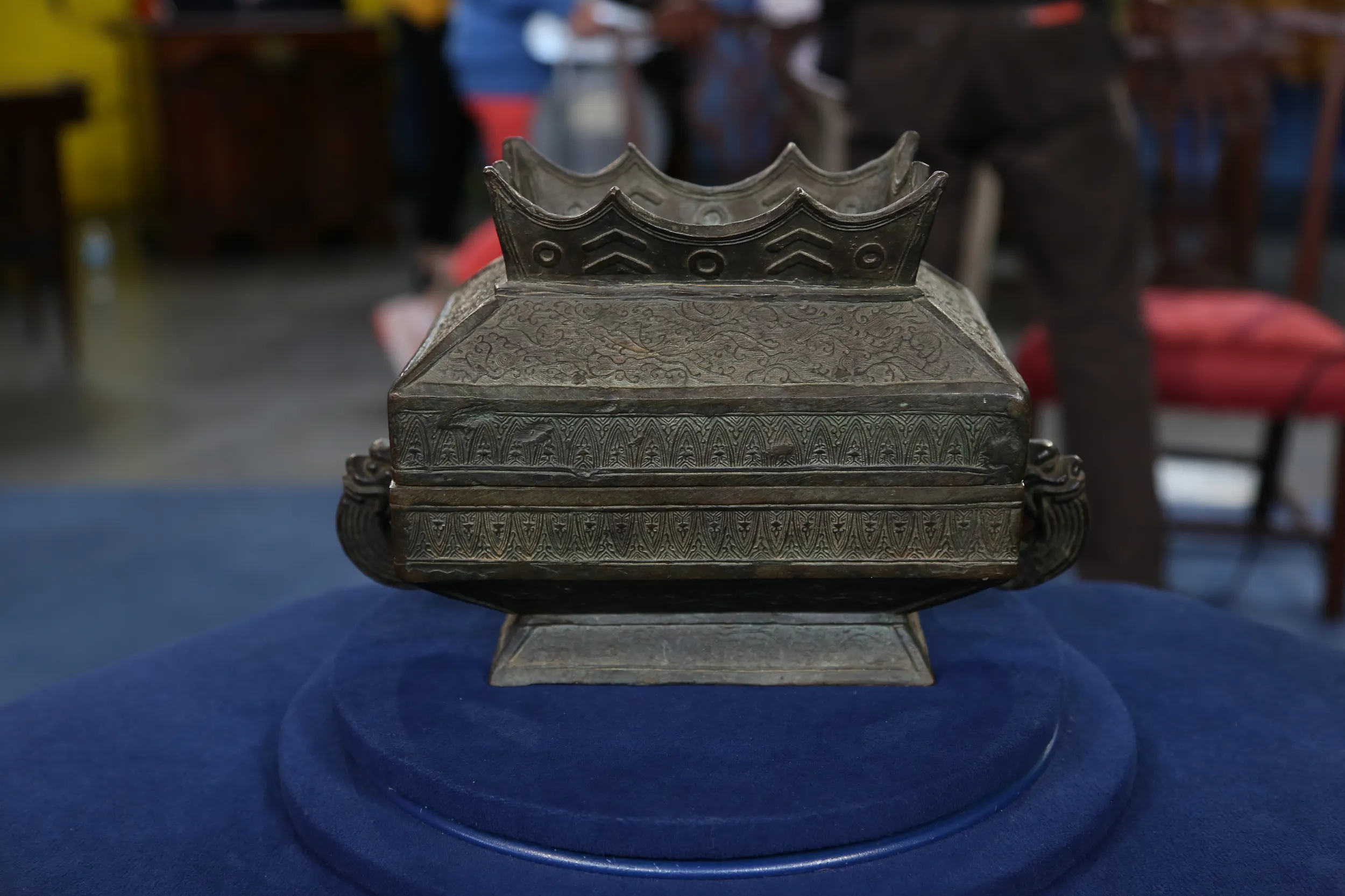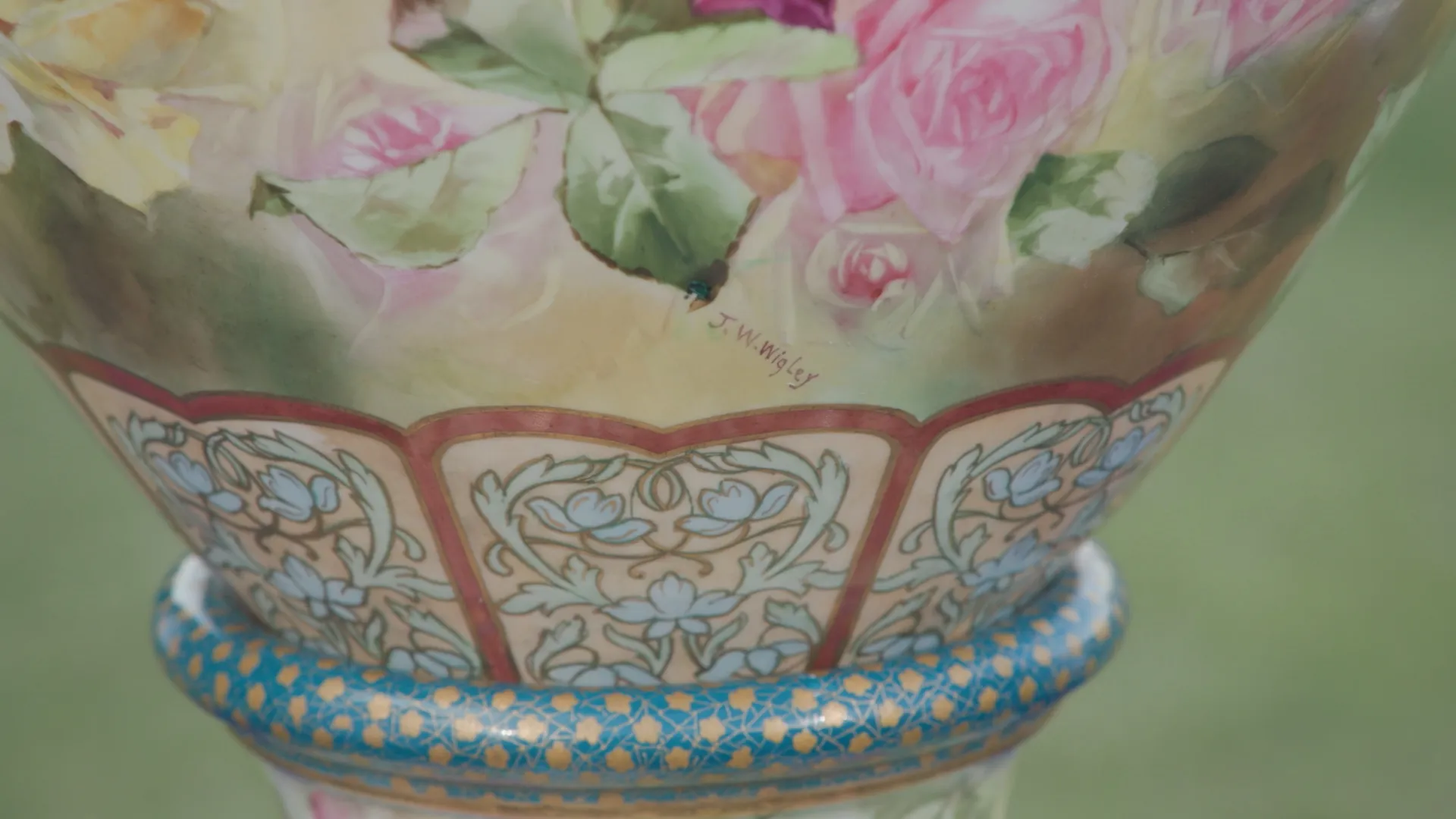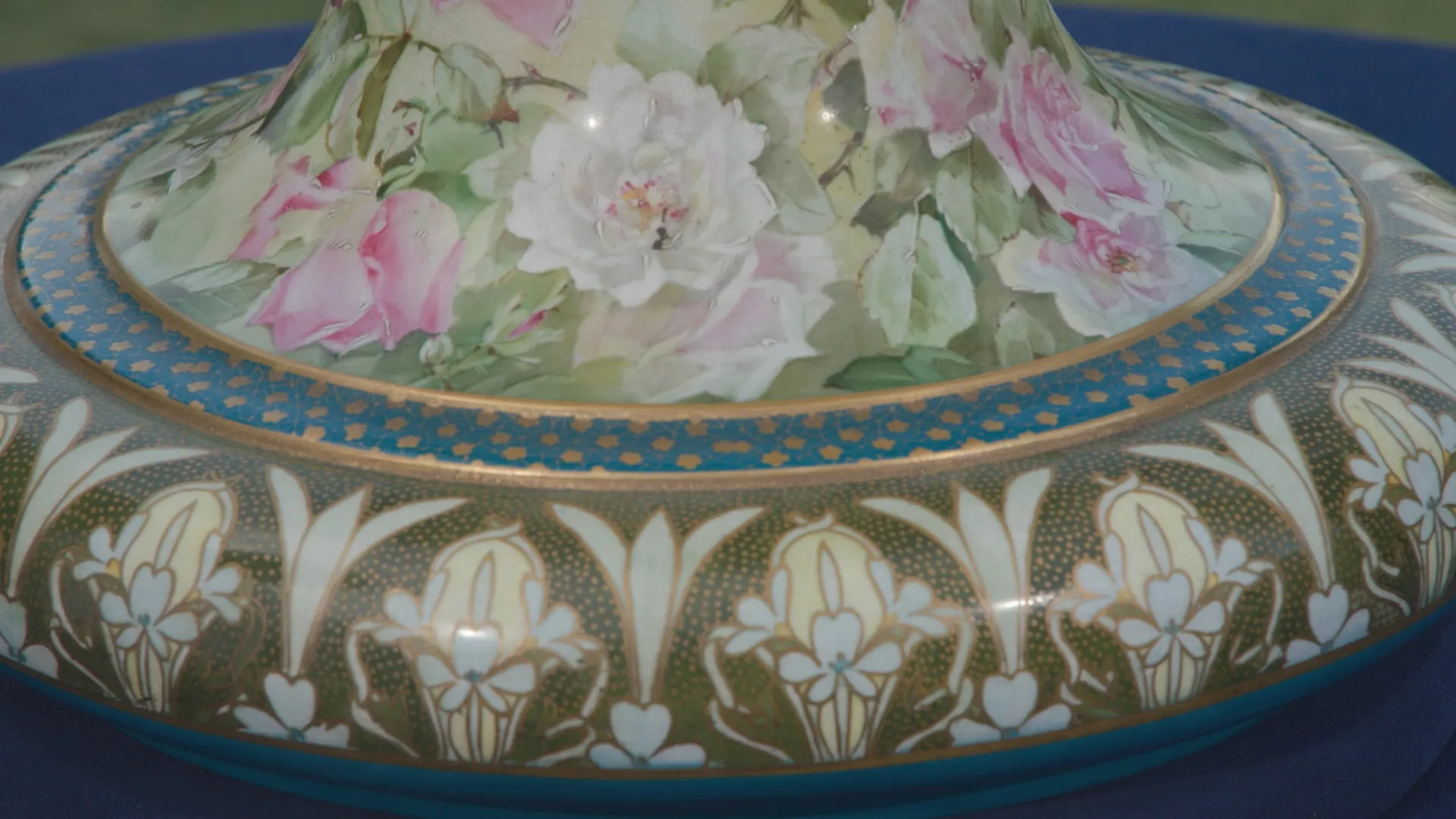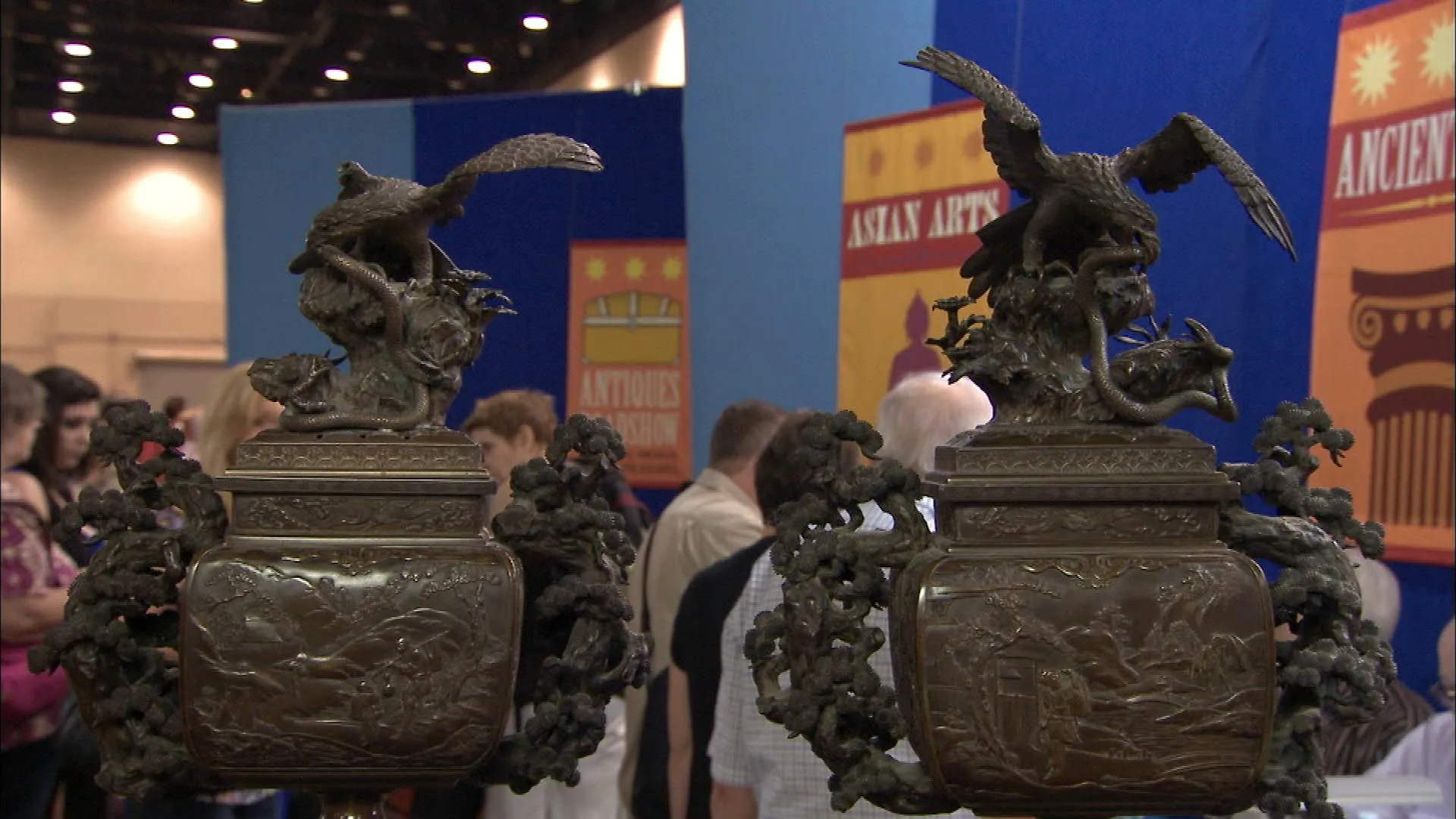GUEST: It came from my grandparents' farm in Northern Virginia, and I've been admiring it since I was ten.
APPRAISER: Yes.
GUEST: We have had someone look at it and said they thought it was a Japanese artist's holder of the paintbrushes that the artist might use.
APPRAISER: Mm-hmm. Mm-hmm, yes, it's Japanese. It's more like a flower vase.
GUEST: Okay.
APPRAISER: For just one, one flower.
GUEST: One flower.
APPRAISER: Yes. It's from late 19th century.
GUEST: Wow.
APPRAISER: Yes. Meiji period. 1868 to 1912. But I, I would say it's about 1890. This material is called "shibuichi," which in Japanese means "25%." Because it contains 25% gold, this alloy.
GUEST: Really?
APPRAISER: On bronze, yeah, so this becomes gray except for the middle. It's a cloisonné.
GUEST: Cloisonné.
APPRAISER: Yeah, and with a gold wire. So the scene is two demons. It's kind of cute demons, but they are chasing a girl. (chuckles) Like, I think she's making a face at them. And you saw the signature, the maker.
GUEST: Yes, but I didn't...it didn't mean anything to me.
APPRAISER: Right, because it's written in Japanese.
GUEST: Yes.
APPRAISER: And it's a very famous, very good maker called Ozeki. It says "Ozeki Sei." It's also signed "Katsuhiro." And I believe it's, uh, Suzuki Katsuhiro, who is also famous. I would say maybe, conservatively, $25,000 to $35,000.
GUEST: Holy cow.
APPRAISER: You know why? It's because, um, the, the reason $25,000, it's just, it has this a little bit of a problem. It's a condition issue, which is very important.
GUEST: Mm-hmm.
APPRAISER: So I'm making it very conservative.
GUEST: Mm-hmm.
APPRAISER: But if without that, I think it go for… it's going for like $40,000 or $50,000, I wouldn't be surprised.
GUEST: Hm.
APPRAISER: Thank you for bringing it.
GUEST: Well, thank you. It's beautiful.
APPRAISER: Thank you!
GUEST: I knew it was beautiful. I just didn't know...
APPRAISER: Yeah.
GUEST :...how much it was worth.
APPRAISER: That’s good. Right. Yes.
